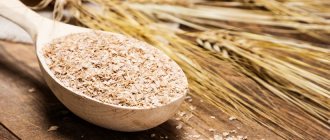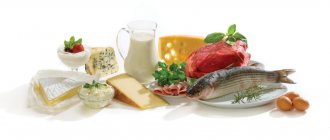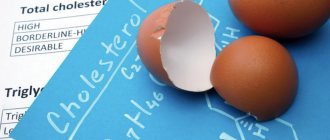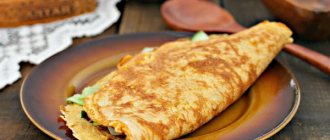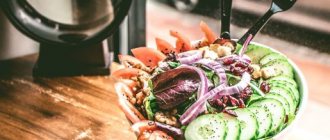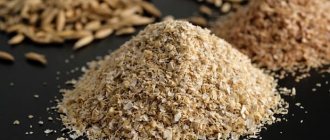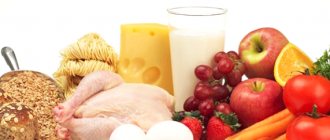If you often watch American films or TV series, you have probably noticed that at picnics, Americans do not roast kebabs over the fire, but sweet, fluffy marshmallows.
Marshmallow, or marshmallow, is a traditional American marshmallow. In taste and texture, it is very different from the marshmallow we are used to. However, this does not prevent him from gaining popularity in our area. In recent years, Marshmallow marshmallows have become especially popular with children. Confectioners also widely use marshmallows to decorate desserts.
Today we’ll talk about what marshmallows are, how they differ from classic marshmallows and how you can use them.
What is marshmallow
First, let's figure out what Marshmallow marshmallows are and who invented them.
In general, often when translating the word “marshmallow” into Russian, the translator gives “marshmallow”, and vice versa. This is not entirely correct, since these are completely different desserts. In fact, "marshmallow" is "marshmallow" and "zephyr" is "zephyr." This is how many people constantly confuse these desserts due to incorrect translation.
Basic composition and scope of application
Classic marshmallows contain water, sugar, gelatin and corn syrup. The gelatin is dissolved, a syrup is boiled from water and sugar, which is then added to the gelatin. The whole mass is whipped until dense, deposited and dried. So, they turn out snow-white. If desired, marshmallows can be colored with ordinary water-based gel dyes.
The scope of application of Marshmallow marshmallows is quite wide. It can act as an independent treat, or it can serve as a decoration or filling for other desserts. Marshmallows are also often used to decorate hot drinks and alcoholic cocktails.
History of appearance
Traditional marshmallows didn't appear until the 1940s. The name of the dessert comes from the plant “marsh mallow” - medicinal marshmallow. In Ancient Egypt, sticky candies were made from marshmallow root, honey was added to them, and the whole thing was chewed as a cure for sore throats and other colds.
Over the past centuries, the marshmallow recipe has changed several times. Eventually marshmallow was replaced with gelatin. This made candy more accessible. Thus, in the middle of the last century, Marshmallow marshmallows gained incredible popularity among American children.
Benefits and harms
The basic ingredients of marshmallows are sugar and gelatin. Based on their properties, the properties of finished products are determined.
Beneficial features
- Gelatin is good for cartilage and joints
- Collagen contained in gelatin strengthens the structure of hair and nails
- Reduces stress levels and improves brain function
Harmful properties
- Large amounts of sugar have a negative impact on the body
- Increases blood sugar levels
- When consumed in large quantities it leads to obesity
Contraindications
- Diabetes
- Impaired carbohydrate metabolism
- Allergy or individual intolerance to components
How is it different from marshmallows?
Despite their similar appearance, marshmallows and marshmallows are completely different desserts. They have different composition, texture and taste.
The marshmallow base is applesauce and egg white. Marshmallows are based on water or fruit juice. Agar-agar or pectin acts as a gelling agent for marshmallows, and gelatin for marshmallows. Marshmallows may be a vegan dessert, marshmallows are not.
The structure of marshmallows is soft, loose and quite dense. With light pressure it slowly returns to its original shape, with strong pressure it crumbles and breaks. Zephyr does not stretch and has almost no spring. Marshmallow marshmallows are light and airy. They stretch easily, spring well and quickly return to their original shape. When broken, they tear and do not crumble.
The taste of marshmallow is dominated by a bright berry or fruit note. It is quite heavy in weight. Marshmallows have a bright vanilla flavor. These marshmallows are very light.
You can learn more about the differences between marshmallows and marshmallows in this article.
The history of marshmallow creation
For the first time, the prototype of this delicacy appeared as a medicine. In Ancient Egypt, healers used a white sticky mass of marshmallow, which in English is called “marsh mallow”. It was used to relieve a patient of a sore throat. The mass had an unpleasant, bitter taste. Therefore, it was often mixed with honey. This allowed for more sweetness.
The new format of the delicacy highlighted the pleasant taste of the plant in combination with honey. Later, confectionery masters added nuts. From this moment on, marshmallow began to be used in the production of sweets. According to ancient recipes, cooks took the peeled root and boiled it with sugar syrup. The mixture was left and waited for it to dry. The result was a soft, chewy treat.
The treat was given its modern look in France in the 19th century. In those days, whipped marshmallow juice was used. The delicacy was very popular, but it was difficult to prepare. To simplify the preparation procedure and create the desired consistency, the juice was replaced with egg white and cornstarch. In some cases, the protein was replaced with gelatin. This made production more accessible. Places where you can buy marshmallows have become more common.
The last stage in the development of the delicacy came at the end of the 40s of the last century. In the United States of America, Alex Doumak figured out how to give this delicacy a modern form. He made the dessert production process fully automated.
Composition and production of marshmallows
As I wrote above, classic marshmallows consist of water, sugar, gelatin and corn syrup. To enhance their aroma during cooking, vanillin or vanilla paste is added to them. On store shelves you can find both white and multi-colored marshmallows.
Instead of water, fruit or berry juices, animal or vegetable cream can be used in the production of marshmallows. They can give marshmallows not only an additional flavor note, but also a natural shade.
Corn syrup is sometimes replaced with glucose or invert syrup. Invert syrup, by the way, can be prepared at home. Such syrups extend the shelf life of finished products.
But gelatin (an animal thickener) cannot be replaced with anything. It is he who is responsible for the correct viscous texture of marshmallows. For this reason, marshmallows are not suitable for vegans.
Marshmallows also contain a large amount of sugar, which is not recommended to be reduced. In this recipe, it acts not only as a sweetener, but also as a stabilizer and preservative.
After depositing and drying, the products are quite sticky. Therefore, they are rolled in powdered sugar or a mixture of powder and cornstarch. This way they don’t stick together and don’t stick to your hands.
For those who count calories, I will give a table of KBJU per 100 grams. for classic marshmallows☺
| Calories | Squirrels | Fats | Carbohydrates |
| 318 gr. | 1.8 gr. | 0.2 gr. | 81.3 gr. |
How to cook marshmallow?
Are you interested in learning how to make marshmallows in your kitchen? To make this delicacy quickly and efficiently, follow a simple procedure:
- Soak 25 g of gelatin in 0.5 tbsp. water for 40 minutes.
- Prepare the syrup: heat 155 ml of water and dissolve 350 g of granulated sugar in it, bring the syrup to a boil and add 2/3 tsp. citric acid, cook the resulting mass in a saucepan with a thick bottom under a closed lid for 45 minutes. Don’t be surprised when you notice that the finished syrup is rare—this is what the recipe calls for.
- Cool the syrup slightly and add 1/4 tbsp. l. soda dissolved in 1 tbsp. l. water.
- Heat the gelatin, which has already increased in volume during this time, but under no circumstances boil it! Leave it to cool a little.
- Meanwhile, in a separate bowl, combine 400 g of sugar, 250 ml of water at room temperature, 1/4 tsp. salt and half the prepared syrup.
- Bring the resulting mass to a boil and cook for 8 minutes. Stir the mixture only until it boils.
- Return to gelatin. Start beating it at increasing speed, without stopping the mixer, pour the boiled syrup into the gelatin. Beat the resulting mass for 15 minutes until it increases in volume.
- Now the marshmallow preparation can be poured into a mold to harden. Do not forget that the vessel should be covered with cling film or baking foil.
- After the marshmallow has infused (this will take at least 6 hours), it can be cut into cubes. Be prepared for the fact that the marshmallow mixture will not harden completely and will stick a little to the knife. To make the cutting process easier, sprinkle it with starch. Roll the cut pieces of delicacy in a mixture of starch and powdered sugar (make the mixture at a ratio of 1:1). Marshmallow is ready, bon appetit!
There are many other marshmallow recipes using dyes and flavors. However, the recipe described above is considered the simplest and fastest.
A simple recipe for making marshmallows at home (with video)
Marshmallows are very easy to make at home. To prepare it, you need a powerful mixer (from 450W) and a thick-bottomed bowl for cooking the syrup. In general, I am sharing with you a simple recipe for marshmallows.
Ingredients for gelatin base:
- Gelatin – 10 gr.
- Water – 50-60 gr.
Ingredients for syrup:
- Water – 50 gr.
- Sugar – 200 gr.
- Glucose/invert/corn syrup – 40 gr.
If you decide to use glucose syrup, you need to purchase it from a specialized confectionery store. Glucose from the pharmacy will not work
Additionally:
- Vanilla sugar/vanilla paste (for flavor)
- Vegetable oil (to lubricate the surface)
- Powdered sugar + cornstarch (for dusting)
The marshmallow mass is very sticky. Therefore, the surface on which the marshmallows will be formed and dried must be greased with a thin layer of vegetable oil and sprinkled with powdered sugar.
Process for making marshmallows:
- Combine water with gelatin and leave for a while. The exact swelling time is indicated on the packaging of your gelatin.
- In a thick-bottomed saucepan, combine water, sugar, syrup and bring to a boil. Boil the mixture for 2 minutes, then cool for 2 minutes.
- Dissolve the swollen gelatin in the microwave (heat, but do not boil). Beat the dissolved gelatin at low speed and slowly pour the syrup into it. Increase the beating speed to maximum and beat for 5-7 minutes (time depends on the power of the mixer and the amount of mass). At the same stage, you can add vanilla to the marshmallows.
- Transfer the whipped mixture into a pastry bag. Place marshmallows onto a surface greased with vegetable oil. Leave to dry for several hours (6-8). The exact time will depend on the size of the products and the humidity in the room.
- When the marshmallows are dry, roll them in powdered sugar (and starch), cut into portions and package (optional). Marshmallows are ready!
To make sure your marshmallows turn out right the first time, I suggest watching the video recipe☺
How do chefs use marshmallows?
Chewy marshmallows are also worth buying for those who don’t like to spend time in the kitchen. This is a great stand-alone dessert. Simple ways to use it include the following:
- Add to hot chocolate.
- Roast over the fire.
- Melt in the microwave on bread or cookies.
These options are very popular among Americans. The first is most often used in the cold season to create airy foam on a warming drink. Children most often roast marshmallows over a fire. And a microwave sandwich is a classic student treat.
People who have a penchant for cooking often wonder about cooking on their own. You will understand how to make mastic or cream for a marshmallow cake using a simple recipe. For preparation you will need:
- Packaging of marshmallows - 90 g.
- Lemon juice - 1 tablespoon.
- Butter - 1 teaspoon.
- Powdered sugar - 1 cup.
- Starch - 0.5 cups.
Place the first three ingredients in a deep bowl and melt in the microwave. When you obtain a homogeneous mass, add powder and starch until you reach a consistency that is easy to use. Let the finished mixture sit for an hour to a day.
How to properly store marshmallows
Marshmallow contains a large amount of sugar and syrup, which are excellent preservatives. Therefore, marshmallows are stored for quite a long time.
Optimal storage conditions for marshmallows:
- Storage at room temperature (+14…+18°C)
- Room humidity should not exceed 75%
- Marshmallows should be stored in an airtight container (plastic container, closed bag)
- Do not store marshmallows in areas exposed to direct sunlight.
- The storage location should be dark, dry and cool
The shelf life of store-bought and homemade marshmallows varies. Marshmallows from the store in unopened packaging can be stored for up to 1 year. This is due to the large number of preservatives. Once the package is opened, marshmallows will last up to 1 week.
Homemade marshmallows typically last up to 5 days. When using glucose or invert syrup, the shelf life of marshmallows increases to 2 weeks. The main thing is to comply with storage conditions.
Marshmallow is a universal product. It can be consumed on its own, or can be used as a base for more complex desserts. Moreover, these fluffy marshmallows can be easily prepared at home. So if you are not yet familiar with marshmallows, I recommend taking a closer look at it. I'm sure you'll find interesting uses for these marshmallows.
How to make marshmallows at home
For preparation you will need the following ingredients:
- 220 ml. milk 0% fat;
- 1 pack Dr. Oetker gelatin (10 g);
- 4 gr. sweetener Fitparad;
- vanillin on the tip of a knife;
- any flavorings.
For serving: skimmed milk powder (except Ataki)
Standards: no additional additives, no bran
Instructions and step-by-step photos will help you prepare the dessert:
- 150 ml. beat milk with a mixer with gelatin at maximum speed for 2-3 minutes;
- 70 ml. boil milk, dissolve sweetener and add vanillin;
- While beating the first mixture, pour in a thin stream of the second (boiling water!) and continue beating with a mixer until a thick foam forms for another 10 minutes. (the finished mass is very similar to whipped egg whites);
- Transfer the resulting mass into a plastic container and refrigerate for at least 2 hours.
I leave the container with marshmallows overnight and cover with a lid (do not close, otherwise unnecessary moisture will form in the container).
Making marshmallows at home is much easier if you have something more powerful than a regular mixer, such as a food processor (an immersion blender will not work). It probably has an attachment specifically for whipping egg whites. In this case, the entire cooking process will take you no more than 5-8 minutes.
I insert the egg white beater attachment, pour in the milk, and turn the processor on low. Then I gradually add gelatin while whipping (there is a special hole). While everything continues to whip, I boil the rest of the ingredients and pour them in in a thin stream. I leave to beat everything together for another 3-4 minutes.
Marshmallow is not marshmallow
Although the American delicacy is similar in appearance to the marshmallows and marshmallows familiar in Russia, it differs in composition and has its own peculiarity: when heated, the right marshmallows do not flow, but slowly melt, retaining their taste and acquiring a delicate texture, and when fried over coals they become crusty on the outside.
The choice of the GUANDY brand was not accidental. Specialists of the importing company tried marshmallow samples from all over the world: most of the options either tasted of starch, were too sugary, or had a less pleasant texture, or did not have the temperature properties of marshmallow at all... And GUANDY products pleased us with their premium quality.
How to eat marshmallows
Marshmallow is an unusual sweet. They eat it not only as a ready-made treat with tea or coffee. Since they do not have a pronounced sweet taste, they are often added to drinks or desserts. They are used to prepare mastic for decorating cakes and pastries.
But, you can use it as a hearty snack or regular sweets for tea. Sweets are sold in all stores where you can buy regular confectionery products. On sale they are completely ready to eat, so you can simply eat them from the pack.
Marshmallow mastic
And, if you are planning a birthday cake, then here is an idea on how to decorate it. Yes, yes, from marshmallows, but not in the form that is familiar to us. Make a tasty mastic from the delicate consistency. And at least something from it. The flight of fantasy here is limitless.
You can cover the cake itself with it, and make fancy shapes from the remaining sweets. So let's get started!
Prepare:
- marshmallow 50 gr.
- powdered sugar 100 - 150 gr.
- butter 0.5 tbsp. l.
- gel food coloring 1 drop
Preparation:
1. Place a saucepan half filled with water over high heat. Meanwhile, add marshmallows and butter to a saucepan that can be placed in a bowl with liquid. When the water boils in the pan, reduce the burner to medium heat and place the container with the treat in it.
2. After the mass begins to melt and increase in size, start mixing it with a spatula. Then remove the dish from the heat. Continuing to mix the future mastic, sift the powdered sugar over it in parts. Knead a kind of dough. Do this with a spatula first.
3. Once the base is more or less sticky, transfer it to a table dusted with powdered sugar. Continue kneading the mastic with your hands until the ball begins to hold its shape.
4. Roll out the dough into a sausage. Cut it into as many pieces as the number of colors of mastic you need. Make cakes from each piece. Apply 1 drop of dye to each of them. Start kneading each pancake, turning it into a lump, until it is completely colored.
You can make any figures from mastic. Or, without cutting them or coloring them, cover the cake with the rolled out “dough”.
This miracle can decorate your cake for a birthday or other special occasion. Stock up on your imagination and splash it out in the form of mastic decoration for your dessert. Culinary inspiration to you, friends!
How is marshmallow made?
Now in the world you can count on one hand the number of confectionery shops where mini marshmallows are prepared by hand - most of the product is produced in industrial conditions. The production process of the famous American dessert is divided into five stages.
The first step is to prepare a thick mixture of sugar, water and corn syrup in large vats. Then it is boiled, after which a gelling agent is added and heated for some time at a temperature of 115 degrees.
At the second stage, the resulting mass is filtered through a sieve to filter out any foreign impurities and whipped, after which it increases in volume by about 3 times. At this stage, flavor enhancers, dyes and flavors are also added.
The third stage includes the process of primary cooling in a heat exchanger and pumping the mass with air to make it more fluffy.
During the fourth stage, future marshmallows enter pumps, with the help of which they are squeezed through special tubes onto a conveyor in the form of long “ropes”. Then they are cut into small pieces and take the shape that is already familiar to us.
After cutting, the marshmallows are sprinkled with cornstarch to prevent stickiness and maintain their shape once they are packaged.
At the fifth stage, the candies are cooled with cold air, excess starch is removed and packaged. After which fresh marshmallows are sent to store shelves where 99% of Americans rush to buy them. The recipe for this dessert is presented in the video:
Marshmallow
Other interesting materials Recipes:. Rate it and save it on your social network page! How they do it Eat and lose weight Motivation to lose weight Give yourself the gift of life Smile! New on the forum. Random articles.
Marshmallow is a sweet and very delicate tasting marshmallow. It can be eaten separately as a simple dessert, or added to hot drinks and sweet dishes. For example, many people really like the combination of hot chocolate or cocoa with marmallow.
How to determine your biological age. Birth control pills for weight loss. How to lose weight with hypothyroidism? Poll What kind of water do you drink?
Old polls. Random picture. Breakout salted pollock caviar.
